Hosting a webinar can be a fantastic way to boost brand awareness, engage your audience, and generate quality leads. But without clear and strategic goals, even the most well-planned and executed webinars can fall short of their potential.
That's why setting realistic and specific objectives is critical. By defining what you want to achieve, you can ensure that each event brings measurable success. Let's explore how you can set, track, and accomplish goals that will help you maximize the impact of your webinars.
Why Setting Goals for Your Webinar Matters
When planning a webinar, it's easy to get caught up in the details—what platform to use, how to structure your webinar, or which guest speakers to invite. While these are all essential elements of your webinar’s success, the first thing you need to figure out is the purpose behind your event.
A well-defined goal gives your webinar direction, ensures you're measuring the right things, and helps align your efforts with broader business objectives. Without clear goals, your webinar risks being just another online event, rather than a powerful tool to achieve business growth.
Having a specific and realistic goal in place not only keeps you on track but also motivates your team to put in the effort to engage with the audience. Whether you're aiming for more leads, improved customer engagement, or heightened brand awareness, knowing what success looks like from the outset ensures you don't lose focus.
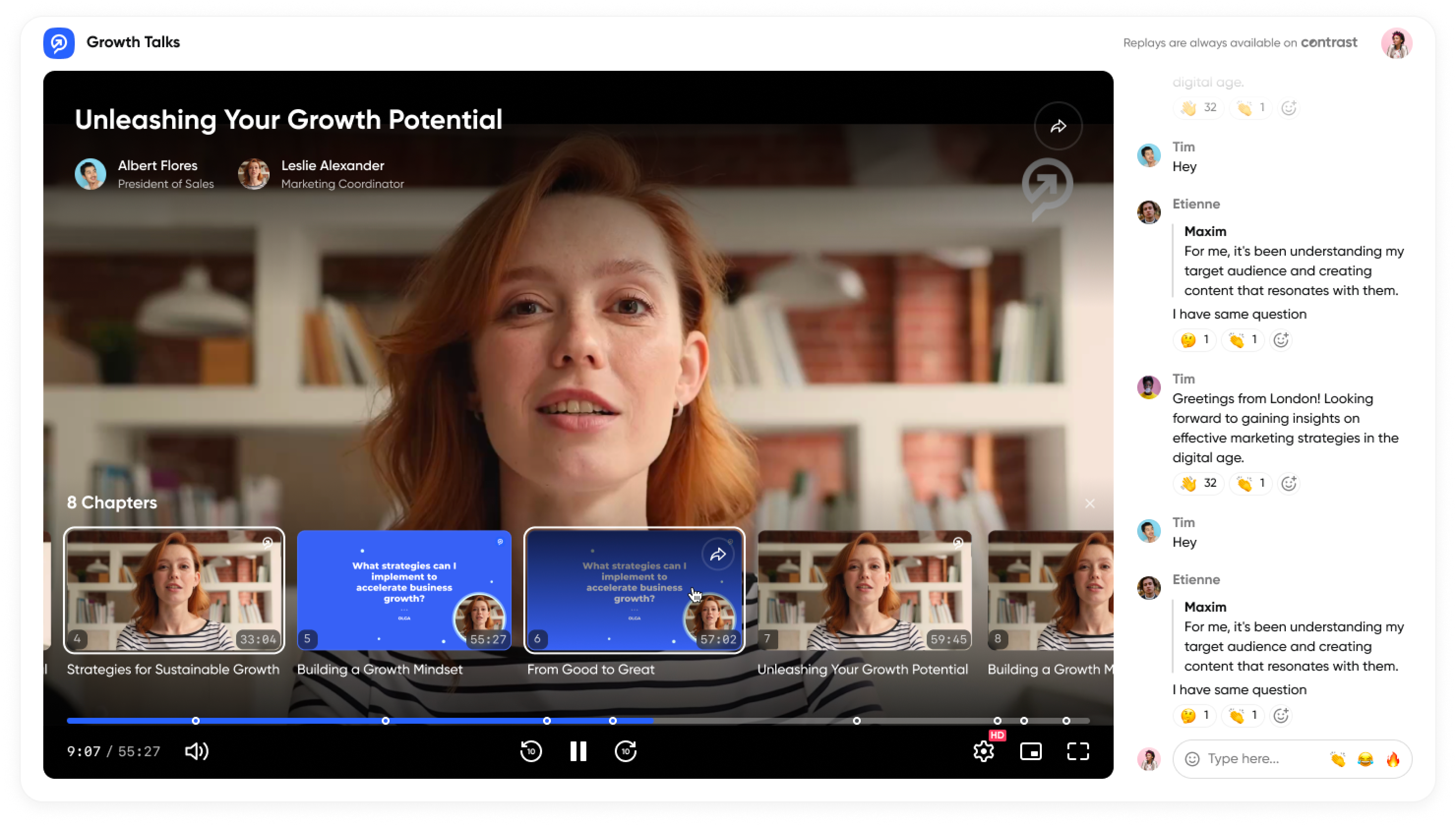
Types of Webinar Goals to Consider
There are many types of goals you could set for your webinar, and they vary depending on your business’s needs and what you're hoping to achieve.
Let’s break down a few common webinar goals to help guide your planning:
1. Lead Generation
Generating new webinar leads is one of the most common reasons for hosting a webinar. This type of goal could focus on collecting a specific number of leads, such as “gain 100 qualified leads” or “increase email list by 25%” after the webinar.
Strategies like using detailed registration forms, offering gated content, or incentivizing sign-ups with exclusive offers can help capture valuable leads. Don’t forget to follow up after the webinar with targeted emails to convert these leads into customers.
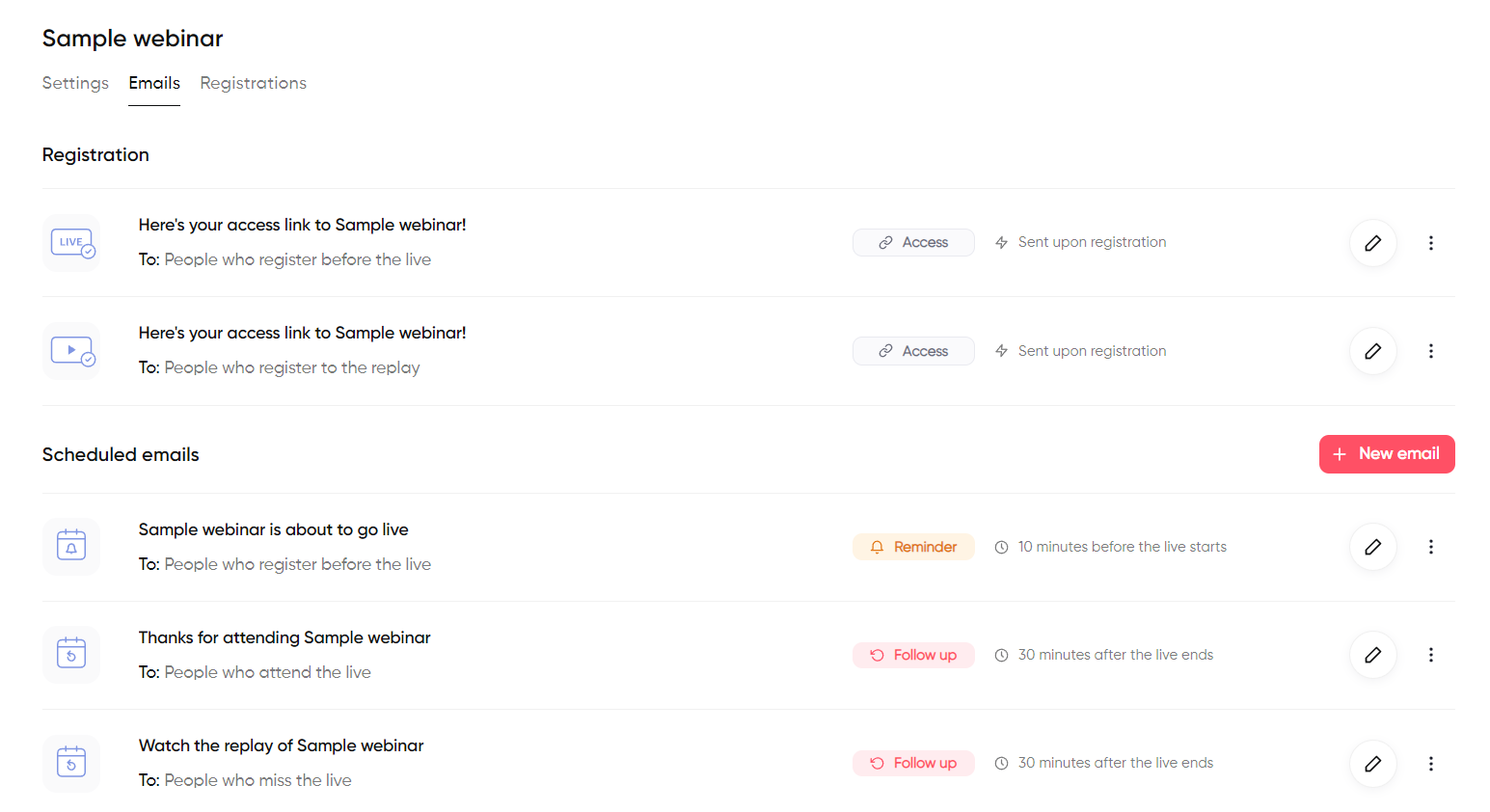
2. Customer Engagement
Engaging your audience throughout the webinar can be a challenge, but it’s crucial for keeping their attention and enhancing the value of your session. Goals around engagement might include getting more participants to ask questions during the Q&A, boosting chat interaction, or increasing attendance rates.
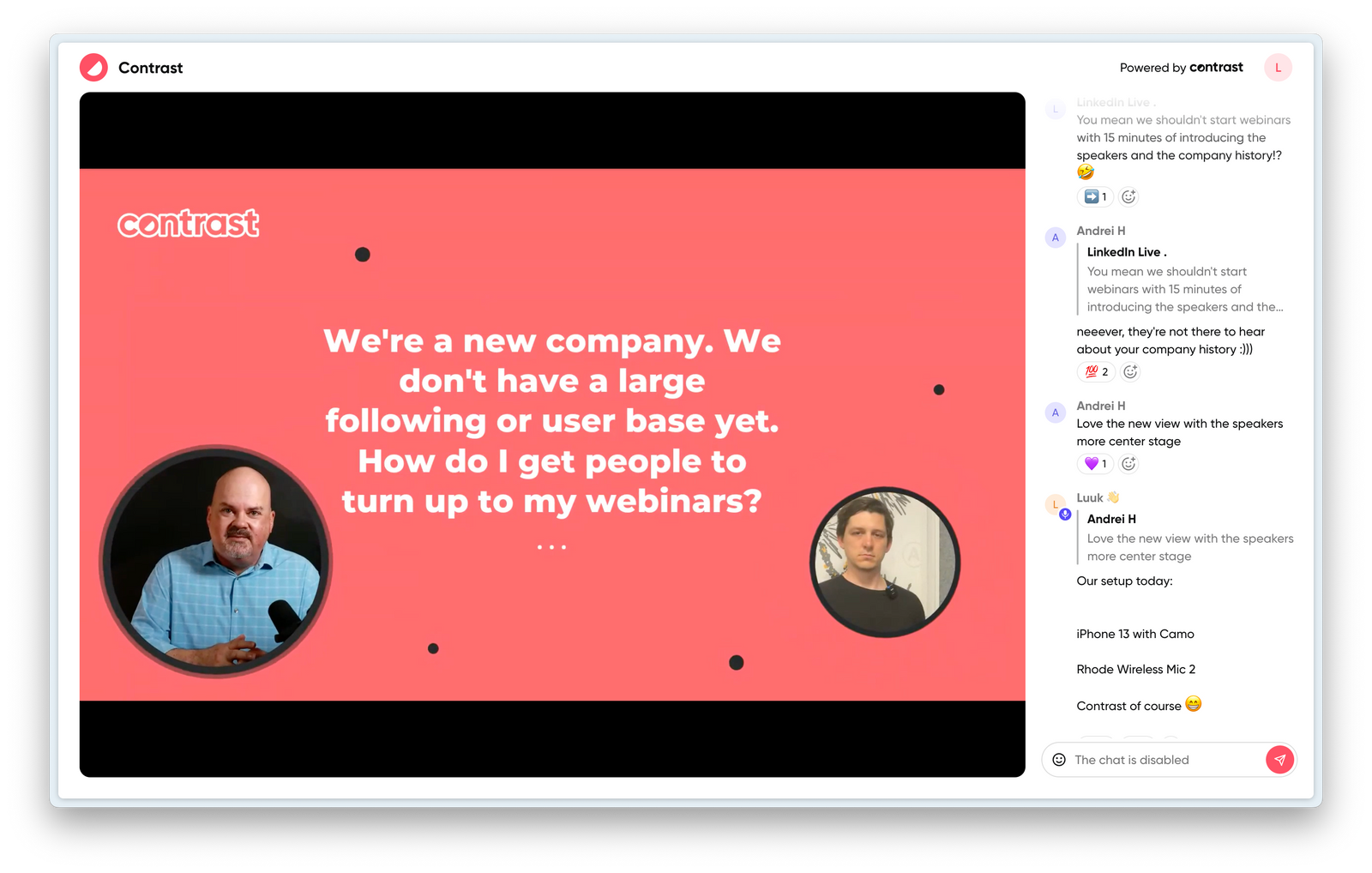
Techniques like live polls, interactive surveys, and offering exclusive content or downloadable resources can keep the audience engaged and involved. Remember, the longer they stay engaged, the more likely they are to convert into leads or loyal followers.
3. Brand Awareness
If you're looking to increase visibility and awareness of your brand, webinars are a great tool. Goals in this category might involve growing your social media following, increasing traffic to your website, or hitting a certain number of webinar registrants.
For example, you might set a target of “reach 500 webinar registrations” or “grow Instagram following by 20% post-webinar.”
To amplify your reach, encourage attendees to share the event with their networks, or integrate social media sharing options into your registration page and follow-up emails.
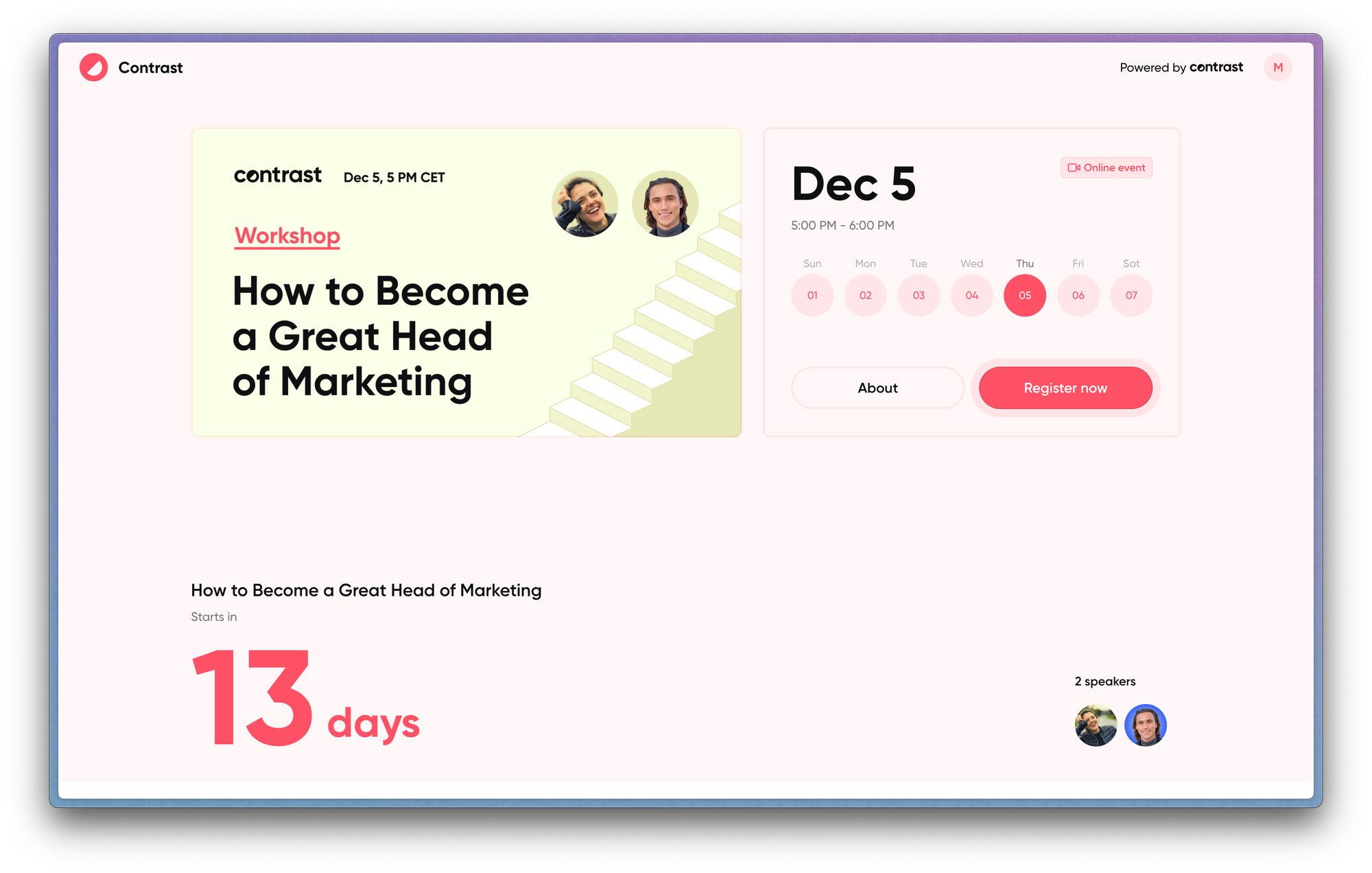
Make sure your webinars are branded to ensure strong brand recall and a coherent experience wit the rest of your marketing.
4. Repeat Attendance
If you're planning to host webinars regularly, you’ll want to aim for repeat attendance. This kind of goal focuses on building a loyal audience who returns for your future events.
You might set a goal such as “Increase repeat attendance by 30% in the next quarter.” To achieve this, create a series of webinars, offer valuable content that keeps attendees coming back for more, and send reminder emails for upcoming events. The key here is to keep providing value that makes them want to come back.
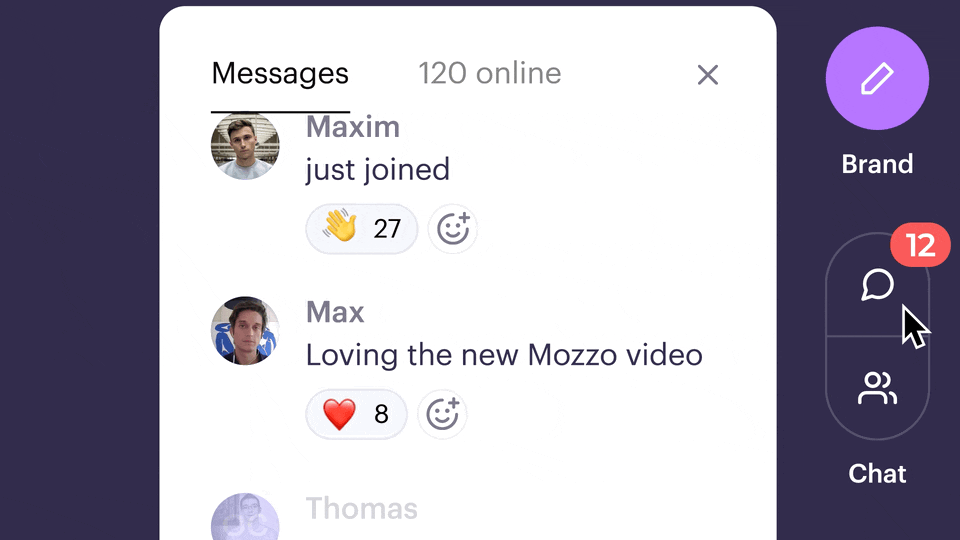
How to Set Realistic Webinar Goals
Setting realistic and effective goals for your webinar is key to its success. But it’s not just about picking random numbers or being overly ambitious. Instead, you want to be strategic, clear, and practical about what you hope to achieve.
The best way to do this is by using a proven framework that helps you set goals that are both achievable and impactful.
Here’s a step-by-step guide to setting those goals:
1. Use the SMART Goals Framework
The SMART goals framework is one of the most effective methods for setting goals because it ensures your objectives are specific, measurable, and realistic. When you follow this approach, you break down your goals into actionable steps, making it much easier to track progress and stay on target.
Let’s break it down:
Specific
Your goal should be clear and unambiguous. Instead of saying, "I want to increase webinar attendance," get more specific.
A good example would be: "I want to boost webinar attendance by 20% in Q2." This way, everyone on your team knows exactly what the goal is and what success looks like.
Measurable
It’s important that you can track your progress. When setting your webinar goals, define key metrics you can measure, such as how many people register, how many attend, how engaged viewers are during the session, and how many new leads you generate.
For example, “Increase registrations to 500” is measurable. By tracking these metrics, you’ll know exactly where you stand and whether you’re hitting your targets.
Attainable
While it’s great to aim high, your goals should be challenging, yet realistic. Take stock of the resources available to you, like your team, budget, and time. Setting an unattainable goal can lead to frustration and burnout, so consider what you can realistically achieve.
For instance, if your last webinar had 200 attendees, aiming for 600 attendees in your next event may be too much of a stretch. A goal of 300-350 attendees could be more practical.
Relevant
Make sure your goals align with your larger business objectives. Every webinar goal should tie back to something important for your company, whether it’s generating leads, nurturing existing customers, or driving brand awareness.
For example, if you're focusing on generating leads, set goals around how many leads you aim to capture and nurture post-webinar (using post-webinar redirects for example). If customer retention is a priority, perhaps your goal is to deliver value-driven content to strengthen relationships with existing clients.
Time-Based
Set a clear deadline for achieving your goal. This adds a sense of urgency and keeps everyone focused.
For example, instead of saying “I want to improve engagement,” make it specific like, “Increase attendee engagement by 15% within the next 30 days.” Having a set timeline helps you stay on track and gives your team a clear target to work toward.
Why SMART Goals Work
By setting SMART goals for your webinars, you’re making sure your objectives are not only grounded in reality but also measurable and attainable. With these goals, you can break down the larger vision of a successful webinar into clear steps and track your progress along the way. This also helps your team stay aligned, reduces confusion, and ensures everyone knows exactly what they're working toward.
For example, instead of just vaguely saying "I want more leads from webinars," a SMART goal could be: "Generate 150 new leads from the next webinar, with 25% converting into demos within the next 30 days."
This goal is specific, measurable, achievable, relevant to the business, and time-bound—giving you clear parameters to work with.
Ultimately, using SMART goals helps you focus on what truly matters, motivates your team to stay on track, and gives you a clear roadmap for success. It also makes it easier to adjust your strategy as needed, based on the data and insights you gather from each webinar.
By breaking your goals down into smaller, manageable pieces, you’ll have a better chance of reaching them—and even surpassing them.
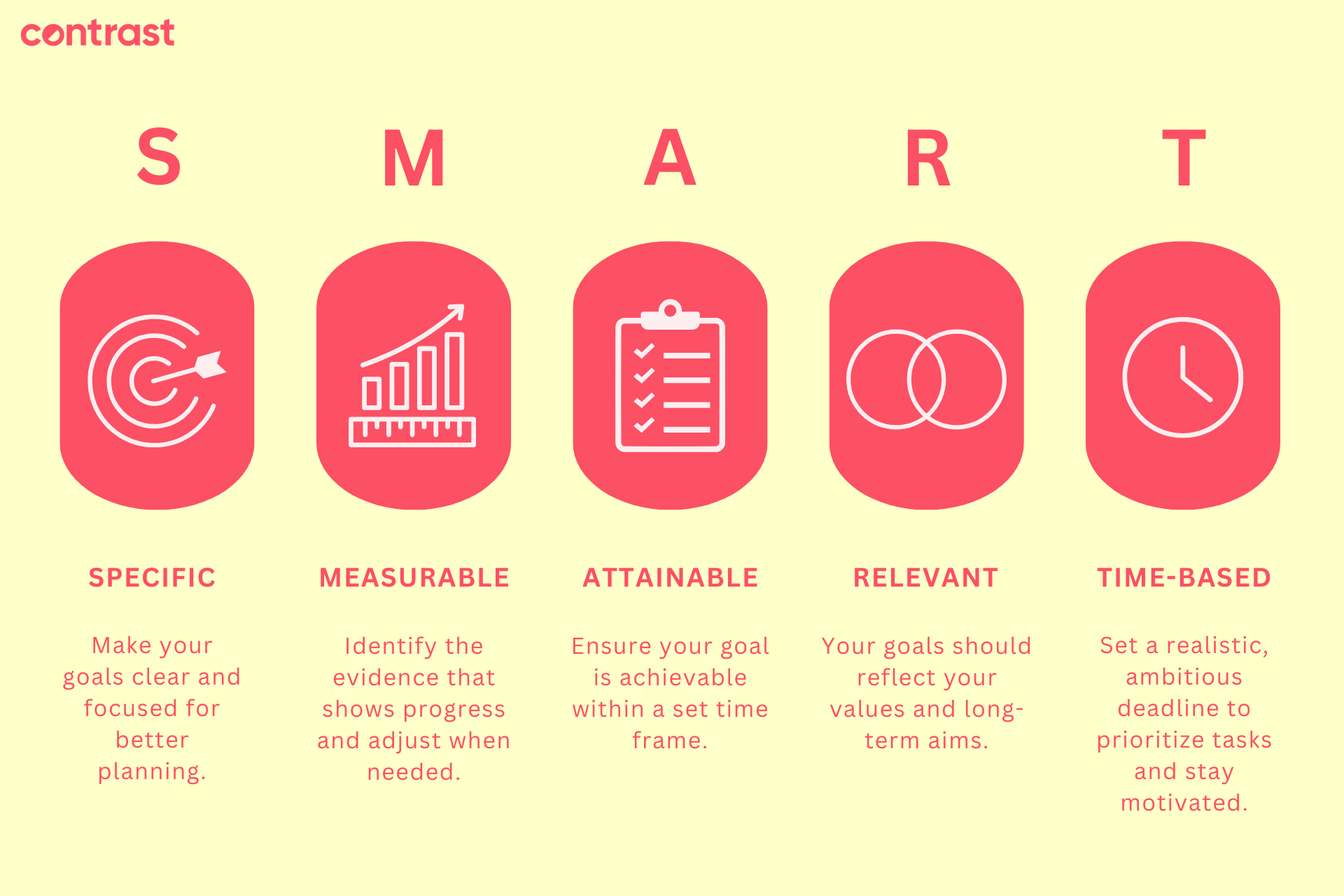
2. Identify Key Metrics Early
From the get-go, it’s important to decide which metrics you’ll use to measure your webinar's success. Choosing the right metrics helps you stay focused on what matters most, and they’ll give you the data you need to improve your future events. Your specific metrics will depend on the goals you've set for your webinar, but there are a few common ones you should always keep an eye on.
Here are some key metrics to consider:
- Number of Registrations
This is one of the first indicators of how well your promotional efforts are paying off. It tells you how many people are interested enough in your topic to sign up.
A strong number of registrations means your marketing message is resonating with your target audience.
- Attendance Rate
Once people register, the next goal is getting them to actually show up. The attendance rate (registrants who attend versus total sign-ups) is a crucial metric to measure.
A low attendance rate could point to timing issues, a lack of follow-up reminders, or technical barriers. If your attendance is high, it's a sign that your webinar has captured attention and interest.
- Engagement Level
This goes beyond just showing up. How actively are attendees participating? Are they asking questions, answering polls, or engaging in the chat?
High engagement levels mean your content is resonating with your audience, and they’re genuinely interested in what you're offering. It’s also a great way to gauge whether your webinar is holding people's attention or if they’re tuning out.
- Conversion Rate
After the webinar ends, one of the most important metrics is how many leads convert into paying customers. This tells you how effective your webinar was at moving people down the sales funnel. Whether it’s signing up for a demo, downloading a white paper, or making a purchase, your conversion rate gives you a solid understanding of the webinar’s impact on your business.
By identifying these key metrics early on and tracking them consistently, you can get a clear picture of what’s working and what needs improvement. The great thing about tracking these metrics is that it gives you concrete data to base your decisions on.
If something isn’t going as planned—maybe your attendance is low or engagement is flat—you can quickly make adjustments to your webinar marketing strategy or webinar content before your next event. Plus, measuring these metrics over time allows you to spot trends and refine your approach, so each webinar is better than the last.
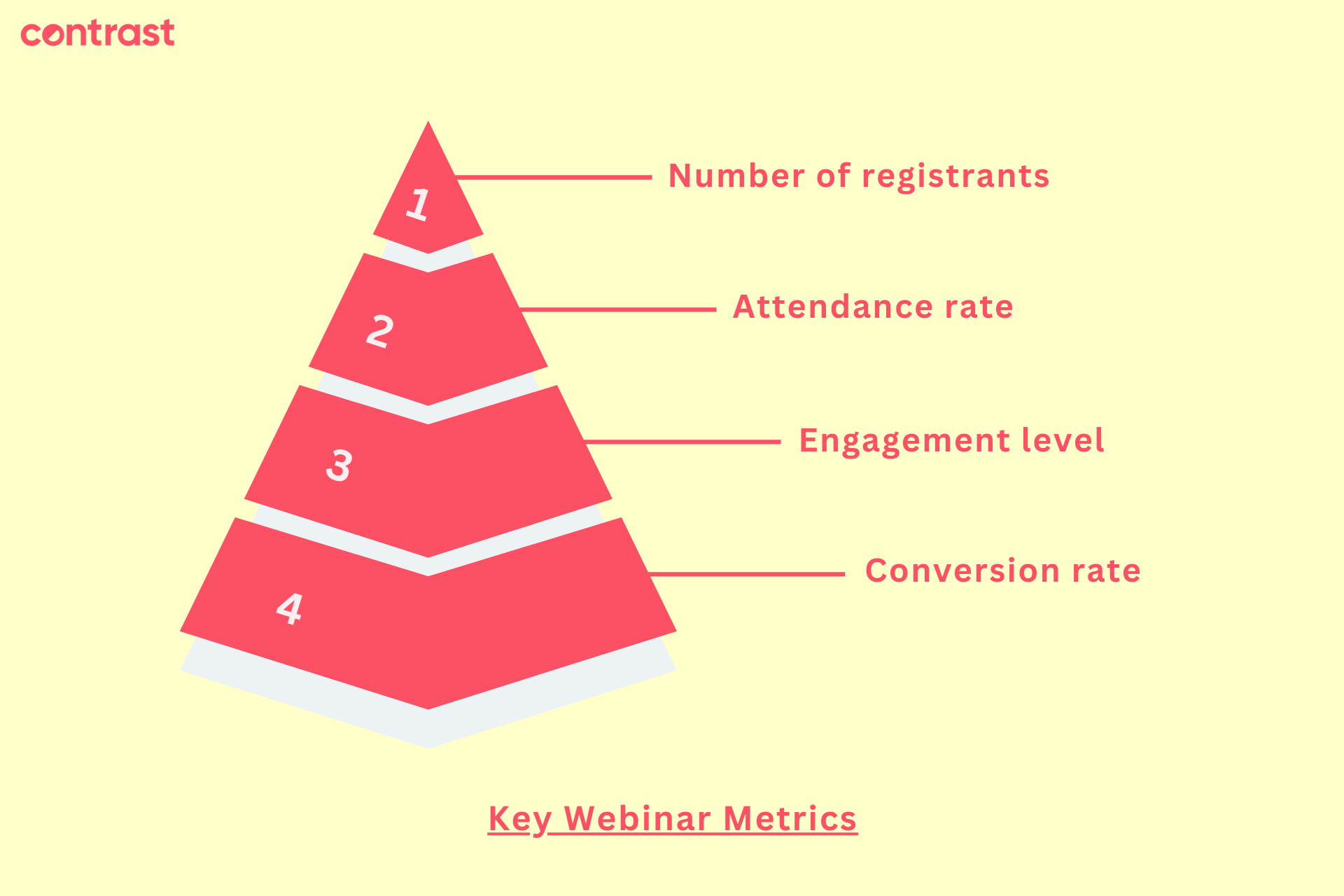
3. Align Goals with Business Objectives
When setting goals for your webinar, it’s essential to make sure they are in sync with your broader business objectives. The whole point of hosting a webinar isn’t just to hold a nice online event—it’s to support your company’s larger goals and growth initiatives. If your business is focused on expanding into a new market, launching a new product, or improving customer retention, your webinar should be a tool to help push those efforts forward.
Let’s say your company is about to launch a new product in a specific region. Instead of just setting generic webinar goals like “increase attendance” or “generate leads,” you should tailor your goals to that specific initiative.
Maybe your goal could be something like, “Attract 100 attendees from the new region and generate 50 product inquiries during the webinar.” Or if your goal is to promote the new product, you could set a target for “sharing product demos with at least 70% of attendees and securing 10 follow-up meetings with prospects after the webinar.”
By aligning your webinar goals with your business objectives, your webinars won’t feel like isolated events or one-off marketing activities. Instead, they’ll become integrated into the bigger picture, contributing directly to your company’s growth strategy.
This approach ensures that every webinar you host serves a clear purpose and actively supports your goals—whether that’s boosting brand awareness, driving sales, or helping you capture and nurture leads from a new market.
In other words, your webinar isn’t just a chance to showcase your expertise or share knowledge. It’s a key piece of the puzzle that helps your company achieve its larger business objectives. If your company is trying to expand internationally, your webinar goals might focus on reaching international audiences and providing content tailored to those specific markets. If you’re focused on customer retention, you could aim to strengthen relationships with existing customers by offering exclusive content or insights that add value.
By setting webinar goals that tie directly to your business’s bigger ambitions, you’re making sure that the effort you put into planning, promoting, and executing your webinars isn’t wasted. Each event becomes a strategic step toward achieving your long-term business vision.
So always ask yourself: How does this webinar tie into what my company is trying to achieve right now? The clearer you can make that connection, the more impactful your webinars will be.
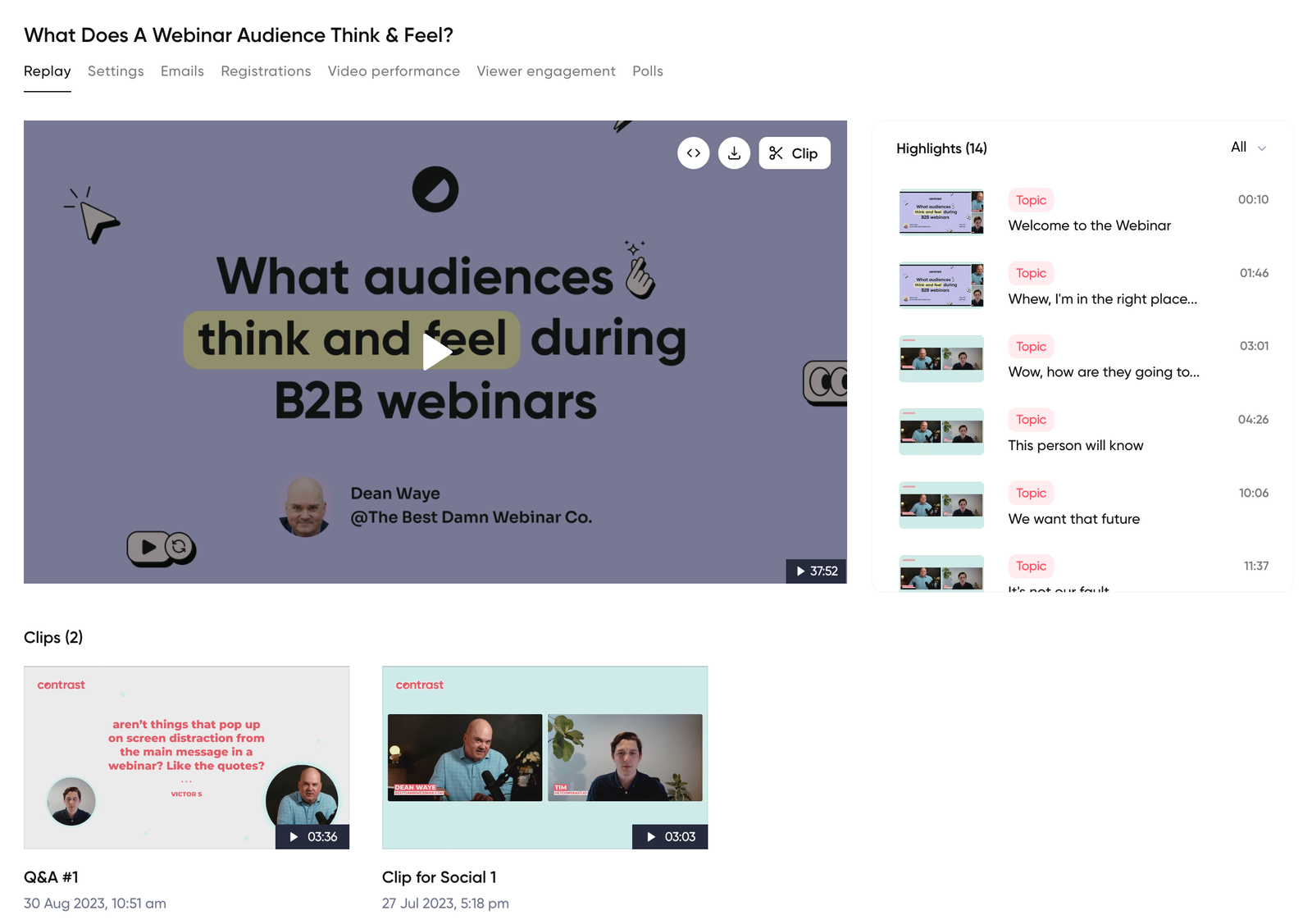
Tips for Achieving Webinar Goals
Once you’ve set your goals, the real work begins. Achieving them requires planning, tracking, and adapting your strategy as needed. Here’s how you can stay on track:
1. Develop a Clear Plan
Create a detailed timeline and plan of action for everything that needs to be done before, during, and after the webinar. From promoting the event to setting up registration pages to preparing follow-up emails, make sure every task is assigned to the right person. This ensures that no detail gets overlooked and everyone knows their role.
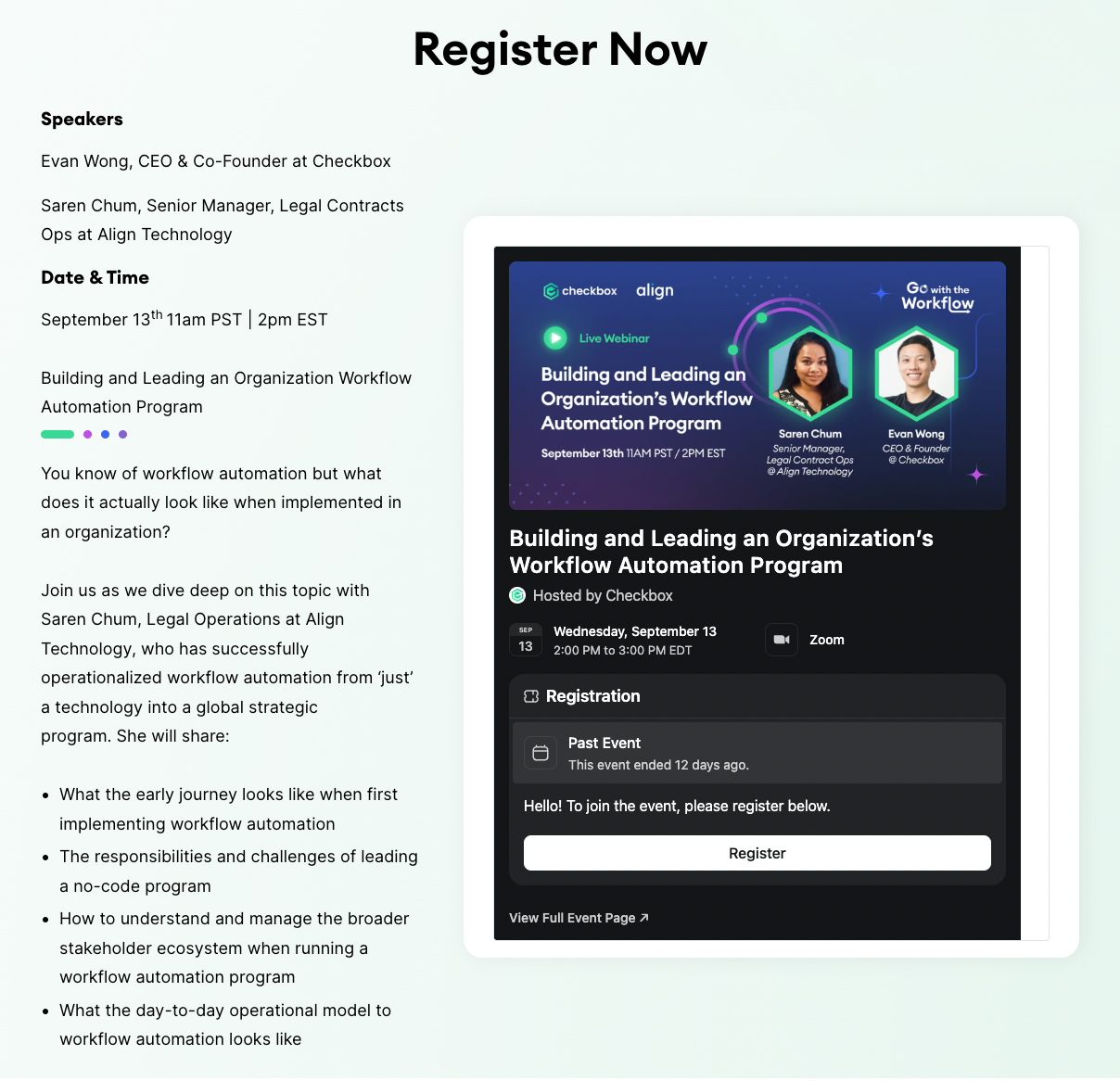
2. Track Progress Regularly
Don’t wait until the end of the quarter to see how you’re doing. Track your webinar KPIs' performance after each webinar to monitor how well you’re hitting your goals. For instance, keep an eye on your conversion rates, attendance levels, and engagement stats in real time so you can adjust your tactics immediately. Regular tracking allows you to make changes quickly if you’re falling behind on your objectives.


Run Modern Webinars to Engage Your Audience
Start for free with up to 30 registrants. No credit card needed.
Start for free3. Stay Adaptable
Don’t be afraid to tweak your goals if things aren’t working out as expected. Sometimes, even the best-planned strategies can miss the mark. If your goal of 1,000 registrants seems too ambitious, try adjusting your promotion strategy or timeline. Flexibility is key to staying on track toward achieving success.

4. Review and Learn
After the webinar, take time to review your performance. Hold a debrief meeting with your team and look at what went well and what didn’t. Gather feedback from attendees, analyze the metrics, and use these insights to refine your future goals. Every webinar is a learning opportunity, so use the data to improve your approach over time.
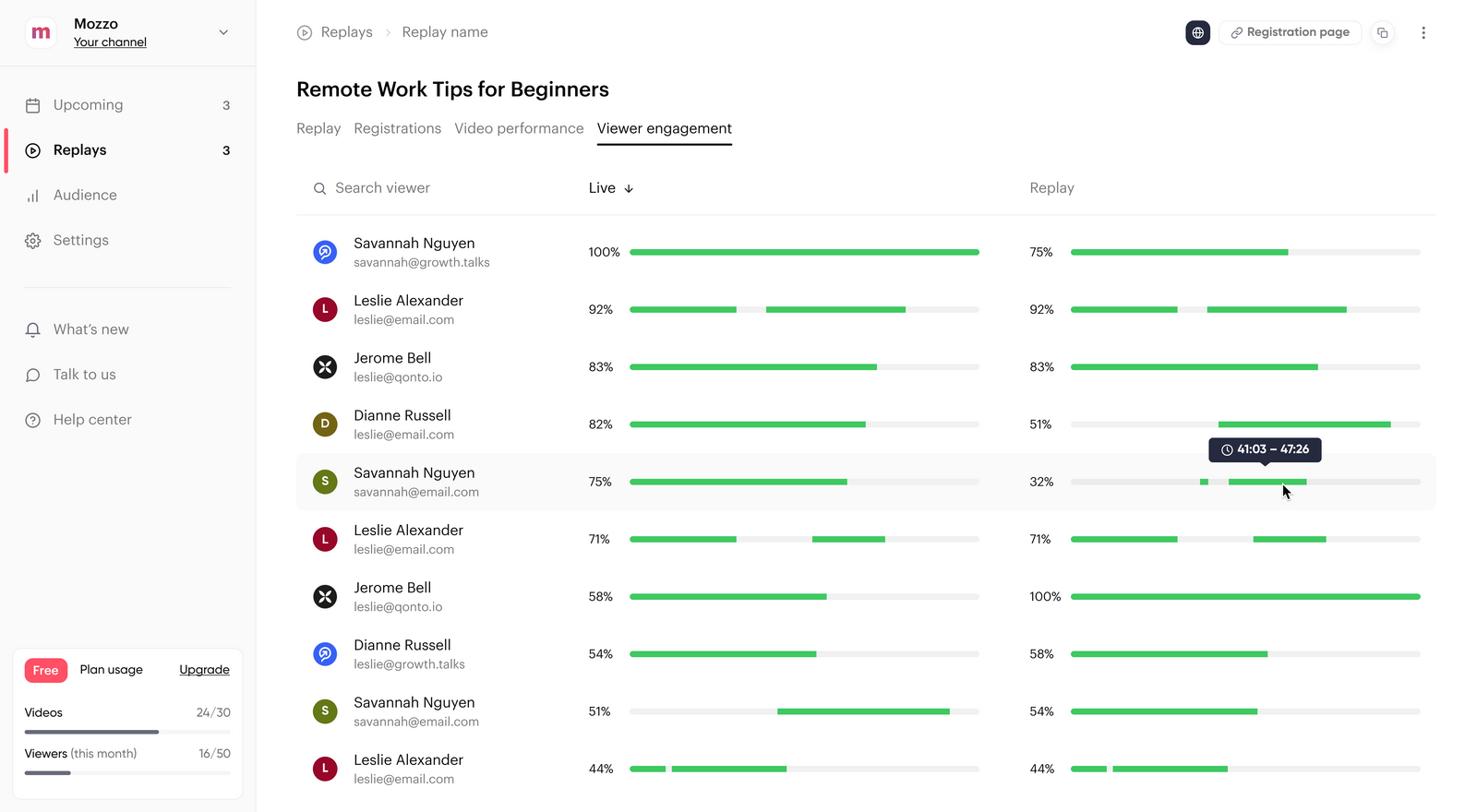
Popular Goal Frameworks to Try
In addition to SMART goals, other frameworks can help structure your objectives and ensure you’re staying on track:
Objectives and Key Results (OKRs)
OKRs are a goal-setting framework designed to align your efforts with larger organizational goals. The idea is to break down big, high-level objectives into smaller, measurable key results that can help you track progress over time. This framework works especially well for long-term planning, as it helps you keep your eye on the bigger picture while still focusing on specific, measurable outcomes.
For example, let’s say your primary objective is to boost lead generation through your webinars. With OKRs, you would define clear key results that act as milestones to measure your success:
Objective: Increase lead generation through webinars.
Key Result 1: Collect 300 new leads per webinar.
Key Result 2: Convert 15% of leads into paying customers.
This approach helps you stay focused on the bigger goal (lead generation) while also tracking specific, actionable results. By regularly reviewing your progress, you can adjust strategies or tactics as needed to ensure you’re on the right path.
OKRs are great for measuring success over a longer period and can also be used to align teams, departments, or even individual contributors.
Final Thoughts
Setting and achieving webinar goals is all about being strategic, adaptable, and focused. A well-defined goal helps guide your planning, keeps your efforts aligned with business objectives, and makes it easier to measure success. Remember, flexibility is key—adjust your goals when necessary and continue refining your approach based on what you learn from each webinar.
Ready to host your next successful webinar? Start by setting a clear, realistic goal, plan out all the details, track your progress, and adjust as needed. With the right strategy and approach, your webinars can be a powerhouse for lead generation, brand awareness, and customer engagement.


Run Modern Webinars to Engage Your Audience
Start for free with up to 30 registrants. No credit card needed.
Start for free